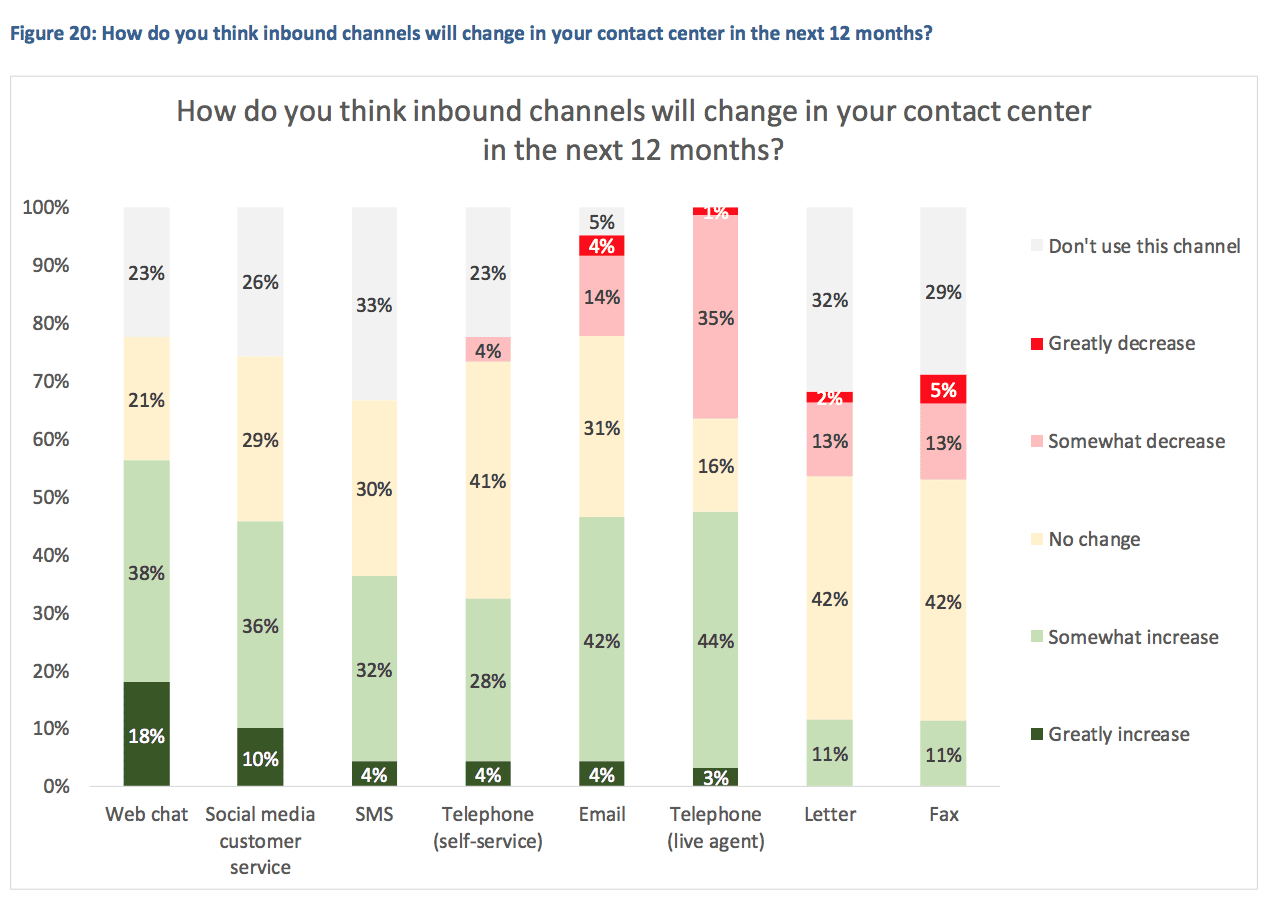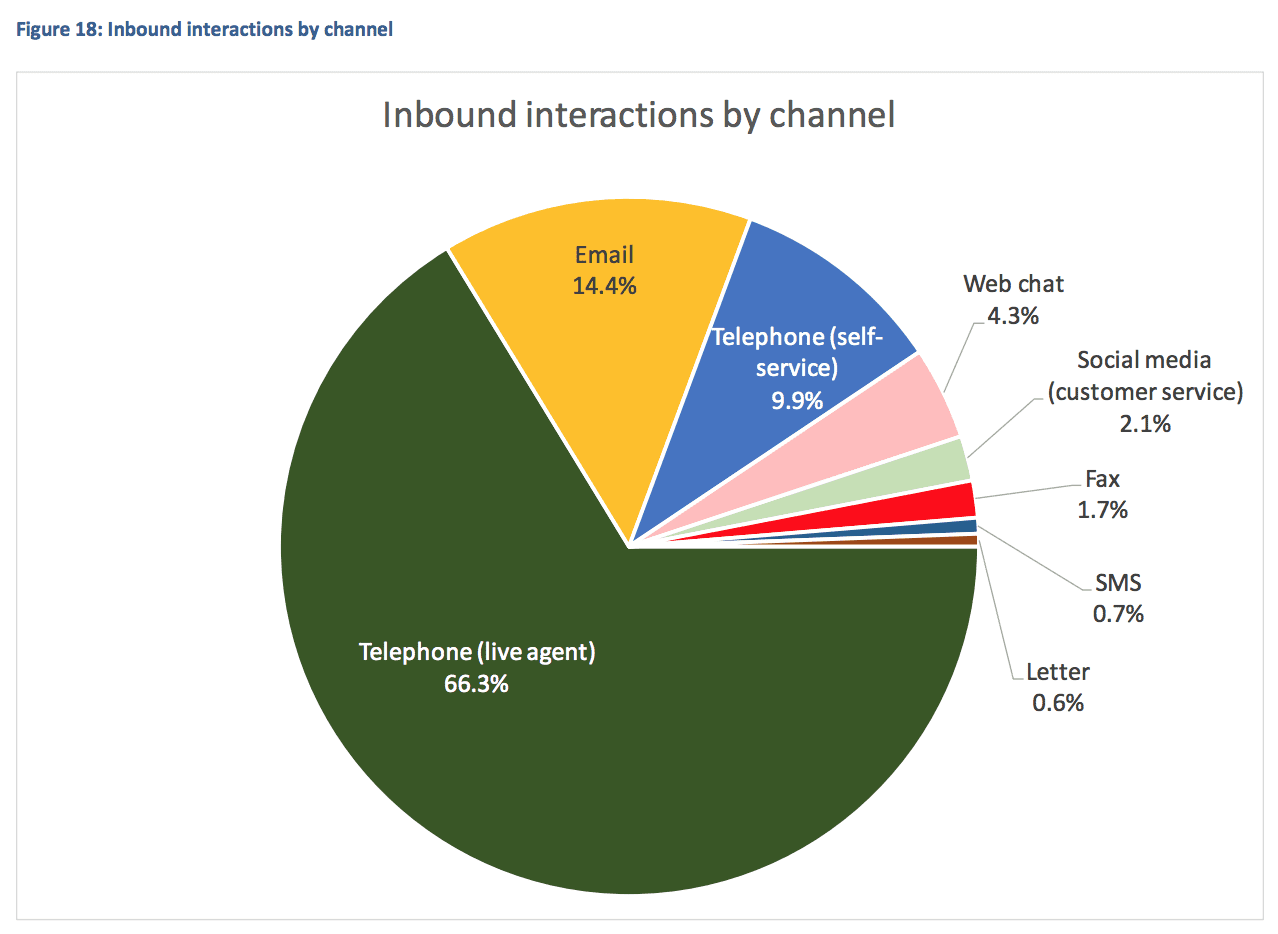Now that customer experience is a main priority for C-level executives at top enterprises, the contact center industry will undergo a major metamorphosis from frustrating cost centers to dazzling profit centers that create exceptional experiences and drive customer loyalty.
There are many predictions about what the contact center industry will look like in 2020 and beyond, but the most important predictions cover the channels that customers will use to speak with their favorite brands and how companies will deliver seamless customer experiences over these new digital channels. This blog will discuss how contact center channels will change in 2020 based on a recent US Decision-Makers Guide by Contact Babel.
MOBILE CHANNELS CONTINUE TO GAIN SPEED
Customer-centric businesses are working harder than ever to support all of the channels that their customers want to use. That’s why 84% of companies who consider themselves to be customer-centric have a heavy focus on supporting mobile channels. COPC reported that mobile care increased by 41% in 2018 alone.
The results from the 2019-2020 Contact Babel Report, as shown, illustrate that as mobile channels become more widely used by end users, channels like email, telephone, letter, and fax are expected to decrease in use. The channel with the largest expected increase in interactions for 2020 is web chat, with 56% of survey respondents believing there will be an increase. Social media customer service and SMS followed with a predicted 46% and 36% increase in interactions.

WEB CHAT FOR THE WIN!
“Web chat offers an organization a chance to cut costs through running more than one chat session at a time with customers, using the time that a customer spends reading and replying to an agent’s response to deal with other customers concurrently, with 2 or 3 chats being seen as sustainable.” — Contact Babel
WHY WEB CHAT IS THE FASTEST GROWING CHANNEL
- Web chat provides an immediate response to current or potential customers.
- Many customers use a company’s website when doing research on the product or service.
- Customers often go to a company’s website to perform self-service before trying to interact with a live agent—web chat allows a smooth transition to speaking with a representative.
- There is more availability as more companies offer web chat services on their websites.
- An increase in automation and AI has made it easier for companies to deploy chatbots on websites while reducing the labor needed to operate web chat.
- AI helps convert prospective customers through proactive communication by having a chatbot automatically pop up as a way to convert leads and reduce shopping cart abandonment.
- Customers enjoy “asynchronous communication”—persistent conversation that takes place over time—allowing them to leave the conversation and come back at a more convenient time.
WEB CHAT “POINT OF CRISIS” USE CASE FROM CONTACT BABEL
“Web chat is often used as a ‘point of crisis’ channel, for example, to convert an online shopping basket into a sale by providing timely service, or if a browser is paused on a web page too long, perhaps as they can’t find what they are looking for. In such cases, there are two main benefits to the business to provide text chat: revenue maximization, and the avoidance of unnecessary calls.” — Contact Babel
“Web chat can also act as a safety net for the customer if an online self-service attempt fails. An analogy can be made with voice self-service, where a failed session is often ended with the customer ‘zeroing out’—pressing zero to get in touch with an agent. Failed web self-service sessions may end with a phone call being made, but web chat can avoid a number of these, which is a cost saving for the business, and better for the customer as well.” — Contact Babel
VOICE IS STILL KING!
Even though we will see a growth in mobile and self-service channels in 2020, companies should continue to create better processes around traditional channels. The figure below shows the inbound interactions by channel, proving that the telephone is still the most widely used customer service channel, followed by email. These channels may not be increasing as fast as mobile but they aren’t leaving anytime soon. In fact, the Contact Babel report indicates that 47% of respondents believe their live phone interactions will increase in the next 12 months.
“Customers still find voice the most convenient, flexible and quickest communication channel in many instances, especially in older demographics and for complex and high-emotion inquiries.”—Contact Babel

OMNICHANNEL APPROACH TO CUSTOMER EXPERIENCE
Both the need to retain strong CX strategies around traditional channels and the need to add new channels has companies wondering how to create and run a true omnichannel contact center that empowers agents and delights customers. The Contact Babel Omnichannel Report walks though more stats from its survey, which could help you in your omnichannel journey.
Bright Pattern has helped companies like Mercedes-Benz, Overstock, American Girl, and TTEC deliver the most innovative omnichannel customer service with our cloud-first, all-in-one platform. With traditional channels like voice, email, and chat, as well as channels like SMS/text, video, in-app, social messengers, and bots, Bright Pattern is the only true omnichannel provider that can be turned on in just days! Want to see it in action?



